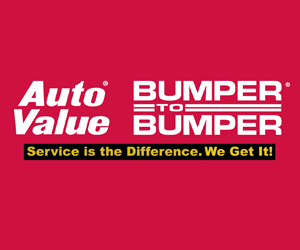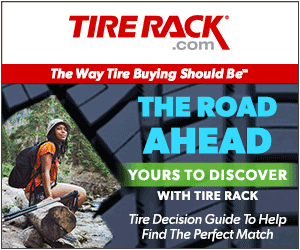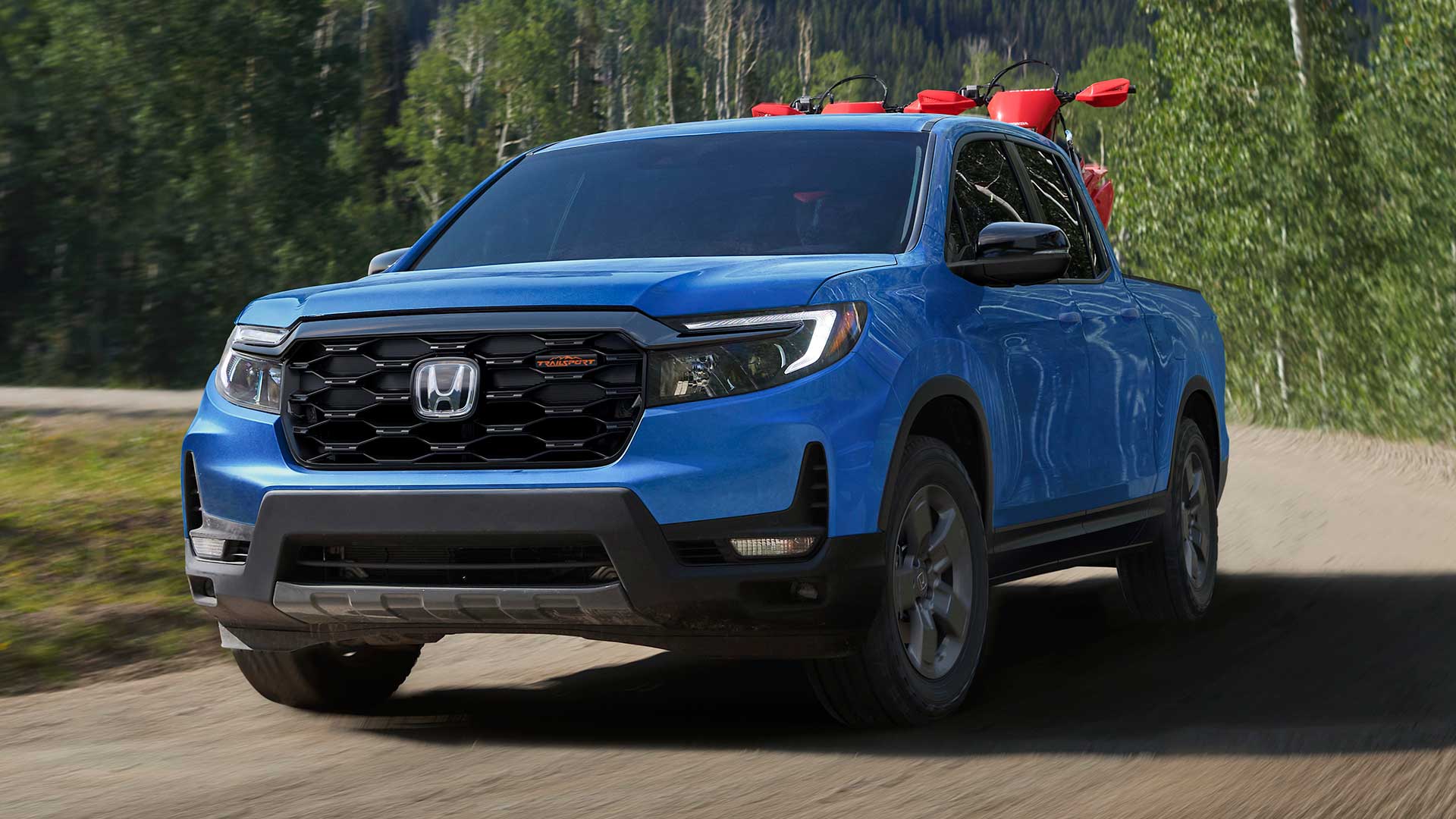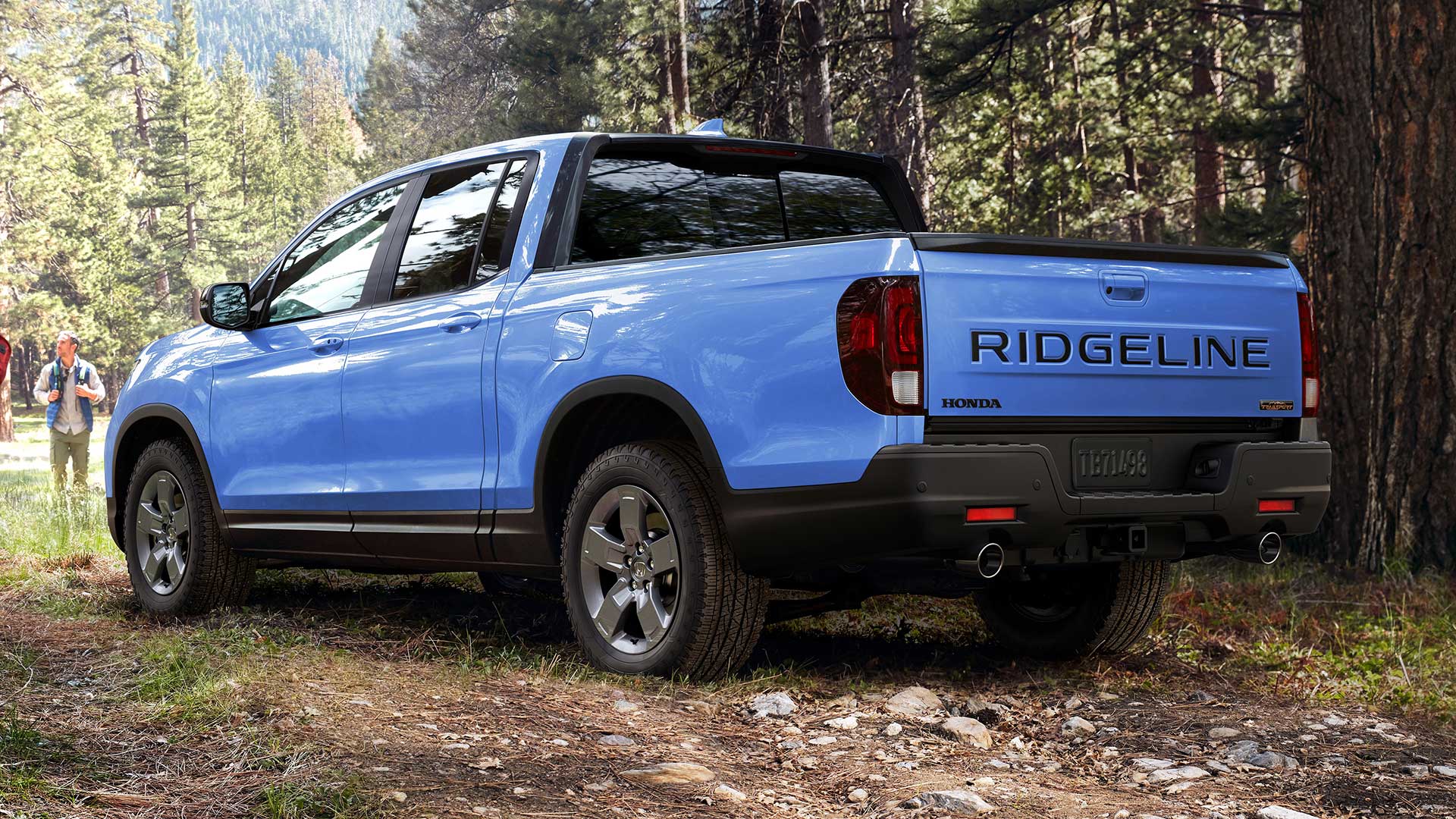2014 Land Rover Range Rover Sport
With last year’s near total transformation of Land Rover’s Range Rover, sales for the ruggedly premium utility brand are up double digits. Indeed, November was one of their best U.S. sales months ever. Well, now they hope to spread a little of that success to their bestselling model, the Range Rover Sport. So, let’s find out if they can keep the momentum going.
A big part of the 2014 Range Rover Sport’s appeal is, without a doubt, that “go anywhere in luxury” tradition of the Land Rover brand. But just like many other builders of traditional SUVs, if they want to increase sales numbers, as Land Rover surely does, their utilities will have to become even more refined.
 And, that’s clearly what was intended with the new Sport. Developed alongside the also-new Range Rover that launched just last year, the Sport shares the same all-aluminum architecture and 800-pound weight loss despite growing larger and more functional.
And, that’s clearly what was intended with the new Sport. Developed alongside the also-new Range Rover that launched just last year, the Sport shares the same all-aluminum architecture and 800-pound weight loss despite growing larger and more functional.
For differentiation, the Sport’s front-end styling is more Evoque than Range Rover, but with the slant-back image of previous generations still intact. It looks slick and rugged; though more than a few of our staffers also pointed out a resemblance to the Ford Explorer. The blacked out pillars and rear glass give it a wraparound visor treatment, with a thick spoiler topping the hatch.
V6 models ride on 19-inch wheels, V8s on 20s. Both V6 and V8 come supercharged, with an incredibly smooth 8-speed automatic transmission and permanent 4-wheel-drive.
The brute of the two V’s is our tester’s 5.0-liter eight. It cranks out 510-horsepower and 461 lb-ft. of torque, and sounds nastier than any SUV we can remember.
 But it’s the interior presents perhaps the biggest visual change where things are simpler, cleaner, more logical, all while becoming roomier. Space was sorely needed in the back seat where the added leg room is appreciated. Still even more is needed for normal adults so those in the front don’t have to move their seats forward.
But it’s the interior presents perhaps the biggest visual change where things are simpler, cleaner, more logical, all while becoming roomier. Space was sorely needed in the back seat where the added leg room is appreciated. Still even more is needed for normal adults so those in the front don’t have to move their seats forward.
New this year is an optional child-size third row. There are loads of interior choices for color and wood tones, and just about all the creature comforts you could ask for including a big sunroof and power rear hatch. Everything works well, and the IP layout is excellent; a beautiful mix of needles and dials with the digital age meeting Land Rover tradition.
Despite the increasingly refined nature, on the road it still feels like a truck, which is just fine by us. It soaks up road imperfections much better than before, there’s a commanding view from the driver’s seat, and no matter the road surface it feels incredibly composed, smooth, and never harsh. It’s probably the best riding SUV out there, managing to still feel like a Land Rover with that go anywhere sensation, just a super smooth one.
Even at higher speeds, the Sport feels flat and sporty, making you want to go faster than you should through corners, but don’t worry, electronic nannies have your back. For a vehicle that weighs over 47–hundred pounds it responds very light. The Enhanced Electronic Air suspension’s Auto mode reacts promptly, and Dynamic mode firms things up to sport sedan territory. Land Rover claims it’s their most agile UTE ever, and we can’t help but agree.
An early winter storm prevented us from really pushing the Sport to its limits at our test track, but did provide us a chance to fully experience Terrain Response 2’s snow setting. While the standard V6 is probably more than up to the task of carpooling and mall running, it’s big V8 power that we crave and the Sport has a huge amount of it, delivering it in a very luxury car-like fashion.
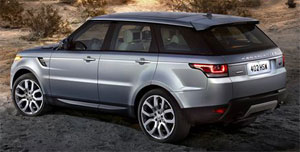 Acceleration is brisk, hitting 60 in as little as 5.0-seconds. Of course you have to pay on the back end with Government Fuel Economy Ratings of 14-City, 19-Highway, and 16-Combined. We managed 16.6 miles-per-gallon of Premium in mixed driving. That makes for a poor Energy Impact Score, with 20.6-barrels of oil being consumed per year and 9.4-tons of CO2 emitted.
Acceleration is brisk, hitting 60 in as little as 5.0-seconds. Of course you have to pay on the back end with Government Fuel Economy Ratings of 14-City, 19-Highway, and 16-Combined. We managed 16.6 miles-per-gallon of Premium in mixed driving. That makes for a poor Energy Impact Score, with 20.6-barrels of oil being consumed per year and 9.4-tons of CO2 emitted.
If we’ve got a nit to pick, it’s the very noticeable stop/start system, though some harshness might be expected when you’re instantly igniting this much engine. But, you really don’t expect any roughness with a vehicle with a base price of $63,495. V8’s begin at $79,995.
So you’ll need to bring the bucks, but you will be very satisfied; as there’s no denying that the 2014 Land Rover Range Rover Sport is vastly better than before. It’s a lot more refined without losing any of its Land Rover-ness. A formula that many other brands have been unable to duplicate, and a recipe that will keep the momentum going for Land Rover.
Specifications
- Engine: 5.0-liter
- Horsepower: 510
- Torque: 461 lb-ft.
- 0-60 mph: 5.0 seconds
- EPA: 14 mpg city/ 19 mpg highway
- Energy Impact: 20.6 barrels of oil/yr
- CO2 Emissions: 9.4 tons/yr
2024 Honda Ridgeline TrailSport
It Does Truck-Like Things Better Than Ever
Honda brought something truly unique to the pickup truck scene when their mid-size Ridgeline debuted for 2006. In 2017, it moved towards becoming a little more true truck-like, both in form and capability, now with yet another step in that direction for 2024. So, let’s see if the Ridgeline is really hitting its stride.
For 2024, it’s all about making this Honda Ridgeline better than ever. There are styling tweaks outside, along with tech and functional improvements inside, but the biggest news is the Ridgeline has now joined Honda’s TrailSport family of off-road inspired vehicles. This more-true-trucklike, second-gen Ridgeline been around since 2017, receiving periodic updates over the years; but joining the TrailSport family is the biggest leap yet.
Primarily, the TrailSport transformation includes General Grabber all-terrain tires, mounted on new Pewter Gray 18-inch wheels, steel underbody protection, and retuning the strut front, and multi-link rear suspension for added wheel articulation. And while we always appreciate the additional traction of off-road tires, the Ridgeline’s standard i-VTM4 all-wheel drive, with Intelligent Traction Management and snow, sand, and mud settings, was already quite capable of handling all but the most extreme off-roading, ground clearance of just 7.6 inches being it’s only real hinderance.
A 3.5-liter V6 remains under the hood as it has since the Ridgeline debuted for 2006; the current version outputs 280 horsepower and 262 lb-ft of torque, plenty enough muscle to handle its 5,000-lbs. towing capacity. A nine-speed automatic transmission with paddle shifters and bevy of push and pull buttons on the console replaced the six-speed automatic back in 2020.
In addition to adding TrailSport capability, a big focus for this update was making it more user-friendly inside, starting with the central touchscreen growing from 8 to 9 inches. It also gets faster processing speeds, menus have been simplified, and the native navigation system is improved with better graphics. It’s accompanied by a new digital instrument cluster, along with an upgraded center console with more storage space. Unique TrailSport touches include heavy duty floormats, leather-trimmed seats, orange stitching throughout the cabin, and orange ambient lighting.
The Ridgeline continues to offer things available nowhere else in the pickup truck market.
Exterior styling doesn’t exactly shout “macho big rig coming your way,” but the more vertical face and larger grille that arrived for 2021, along with this year’s added TrailSport elements, do continue to toughen up the Ridgeline’s image. The 5’4” bed remains highly functional with no large wheel well intrusions, multiple tie-downs points, lighting and even speakers. And of course, the Ridgeline continues to offer things available nowhere else in the pickup truck market, like the dual-action tailgate, and large, lockable, drainable, underbed storage. Not to mention being able to drive around in true car-like comfort, something we took full advantage of on our way to our Mason Dixon Dragway test track.
There was great grip off the line, with full power arriving smoothly but quickly, helping us to get to 60 in 7.0 seconds flat, a tenth quicker than the last Ridgeline we tested. That power delivery stayed fairly consistent the whole way down the track, barely interrupted by the nine-speed automatic’s smooth shifting. Our best quarter-mile run was 15.5 seconds at 90 mph.
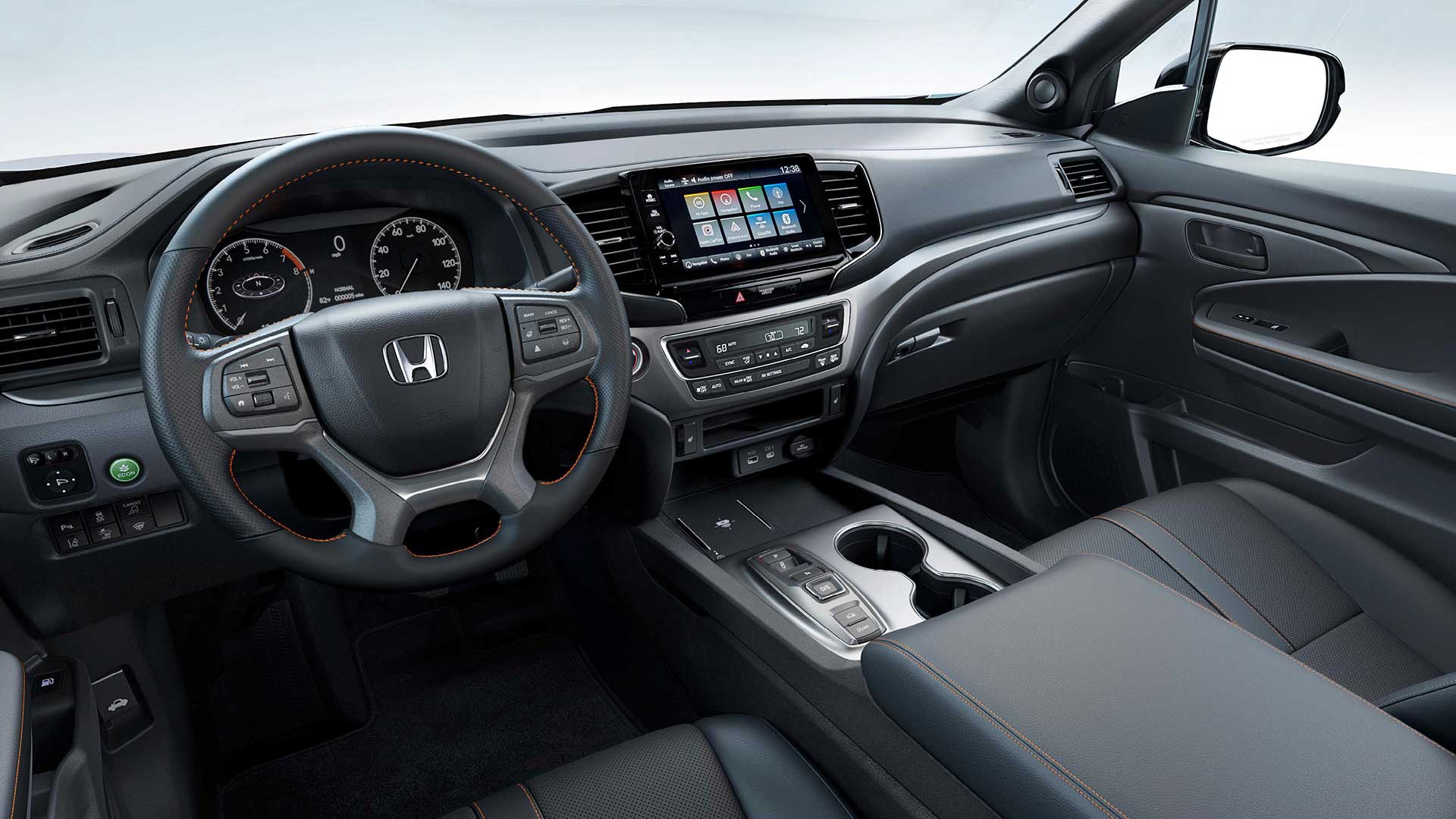
The revised suspension and knobbier tires didn’t really seem to add or detract from handling prowess, as it felt as solid, nimble, and car-like as it always has through our cone course. Perhaps a little less stiff than before, but good feedback, tight steering, and minimal body roll for a pickup, made for a very confidence inspiring experience. In our braking test, we stopped in a respectable average of 123 feet from 60, with only moderate amounts of nosedive and good feel through the pedal.
There is, however, a slight reduction in Government Fuel Economy Ratings with the all-terrain tires; 18-City, 23-Highway, and 20-Combined, our average, right on, at 20.4 mpg of Regular. That’s a slightly below average Energy Impact Score of 14.9 barrels of yearly oil use, with CO2 emissions of 7.4 tons.
TrailSport pricing falls in line just under the Ridgeline’s top Black Edition trim with a starting price of $46,375, about five grand over a base Ridgeline Sport.
So, whether you consider the Honda Ridgeline to be a “real” truck or not, this ruggedly smooth 2024 TrailSport does truck-like things better than ever. And we’re not just talking about the slight upgrade in off-road performance, we’re talking about a flexible bed to help you get chores done, and the ability to tow or haul with comfort and flexibility other trucks can only wish for. It’s why the Ridgeline brings more first-time buyers to Honda than any other vehicle, and why it continues to be a great choice in the growing midsize truck realm.
Specifications
- Engine: 3.5-liter V6
- Transmission: 9-speed automatic
- Horsepower: 280
- Torque: 262 lb-ft
- EPA: 18 City | 23 Highway | 20 Combined
- 0-60 mph: 7.0 seconds
- 1/4 Mile: 15.5 seconds at 90 mph
- 60-0 Braking (avg): 123 feet
- MW Fuel Economy: 20.4 mpg (Regular)
- Max Towing Capacity: 5,000-lbs





